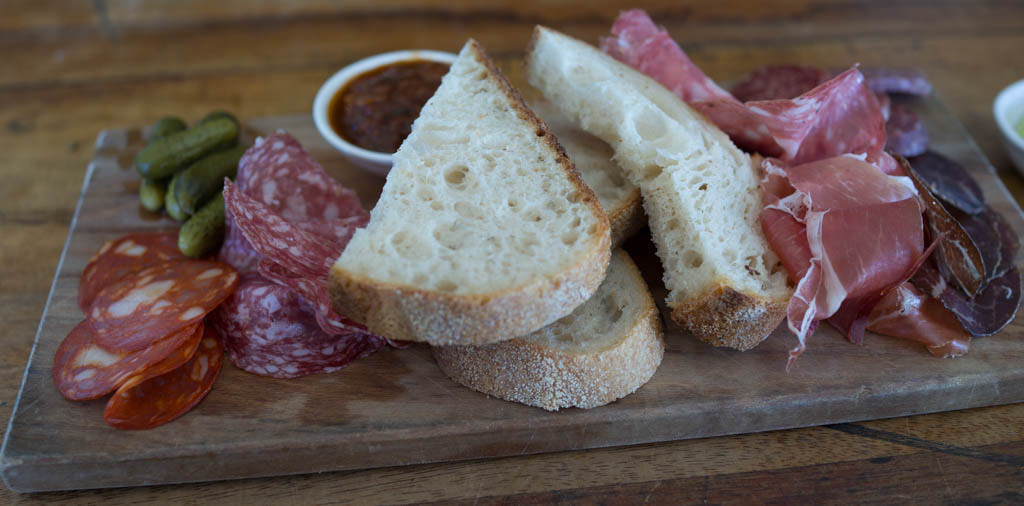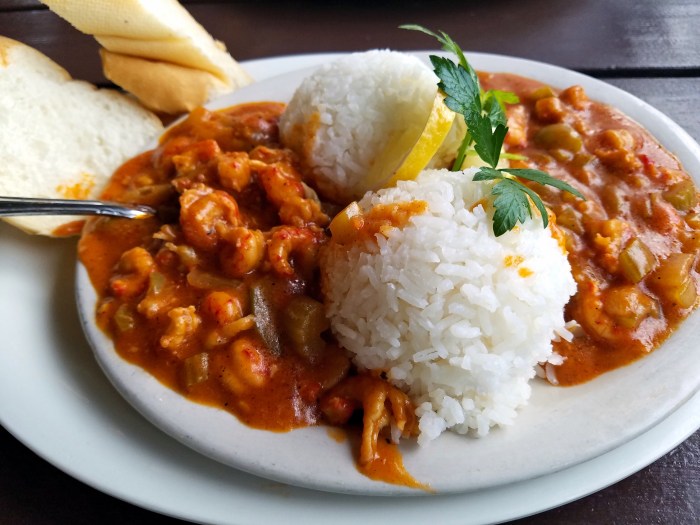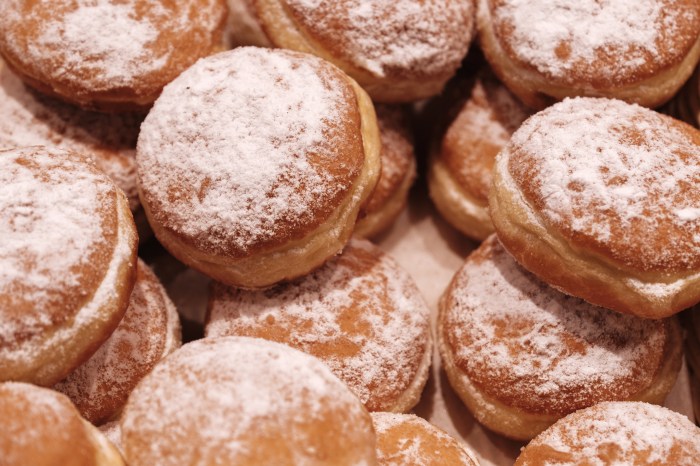If you lean vegan, you’ll want to turn the page. This is all about meat, overwhelmingly pork, smoked and air-cured and terrined, whole legs and loins and, oh yes, the nasty bits, ground and spiced and packed into the pig’s own plumbing.
The French call it charcuterie, from an archaic expression meaning “cooked flesh.” In Italian it’s salumi, honoring the Latin word for salt, the world’s preservative for more than 6,000 years.
(They say aufschnitten in Berlin, further proof that German is not a Romance Language.)
While preserved meats never fell out of favor at ethnic delicatessens, they have staged a spirited comeback at white-tablecloth restaurants and discerning homes, where the charcuterie board has become de rigueur at cocktail parties and casual get-togethers.
Purists stick to meats, served with bread, mustard and an acidic component like cornichons or pickled onions, sometimes offset with figs or grapes or preserves. But growing numbers of restaurants and home foodies have merged their charcuterie with the cheese board, producing groaning platters that add cow and sheep cheeses, olives, nuts, rillettes, patés and more.
Locally, you’ll find hog heaven at Mirabelle in Stony Brook, Publicans in Manhasset and the sister bars Salumi Tapas and Plancha Tapas, the first in Massapequa, the second in Garden City.
Another standout: Tullulah’s in Bay Shore, where there are more than a dozen possible additions, including everything from duck prosciutto to pickled brussel sprouts.
Planning to build your own “board” for a coming soiree, or simply heading to the deli for an Italian sandwich? Here’s what you need to know.
Mortadella: Made from finely ground pork and the pig’s neck fat, mortadella is traditionally studded with pistachios and black peppercorns and sweetened with nutmeg and myrtle berries. A staple of Bologna, mortadella is the artisanal masterpiece from which the American lunchbox sandwich devolved.
Prosciutto: The most famous variety, di Parma, has a slightly sweet and nutty flavor; di San Daniele is sweeter and darker in color.
Salami Piccante: This is what Americans call pepperoni. Made in Calabria, it gets its flavor and color from red peppers and paprika. Usually made from pork, but everything from beef and boar to goat and donkey – sorry, Eeyore – have occasionally made their way into the mix. And remember: Salami is salumi but not necessarily the other way around.
Soppressata: Originally from southern Italy, this dry-cured sausage was initially made principally from pork, although it has picked up numerous regional riffs on its trip north, including hot peppers in Calabria, extra lard in Puglia and, in Tuscany, a makeover that swapped out choice cuts for trimmings.
Bresaola: Made from lean beef, this one’s salted, air-dried, and aged for at least six months. Bresaola has a distinct dark red, almost purplish color and a tough, lean texture, so have your butcher slice it paper thin.
Copa or Capocollo: One from Emilia Romagna, the other from Calabria, pretty much the same deal. Both are made using the muscle from the neck of the hog, then dry-cured, often with hot paprika.
Guanciale: Like pancetta but less fatty, Guanciale is made from the jowls of hogs, with the meat rubbed with pepper before aging. Great on a board or sandwich and you can’t make authentic spaghetti alla carbonara without it.
Nduja: This spreadable treat is made from as much as 80 percent pork fat, plus lean cuts, herbs and a generous mix of Calabrian peppers, which provide heat and color. Pronounced, variously, DOO-ja or DOO-ya, it originated in the town of Spilinga, where a three-day nduja fest is held annually in early August.
Lonza: Cured and air-dried pork loin, usually seasoned with black pepper or fennel. Plays nicely with other meats on the board. The French have a smoked version called Filet de Coche Fumé.
Lardo: Pork fatback cured with herbs and spices, often rosemary. The most prized variations come from Italy’s Aosta Valley, where pigs are fed a diet of chestnuts and vegetables. Lardo on toast with a drizzle of honey is traditional. And yum.
Mocetta: From the northwestern region of Italy, mocetta is traditionally made of cured beef, although often with goat or wild game such as deer or boar. The meat is usually marinated in wine with bay leaves and juniper berries, then salted and air dried. Slice it thin, although locals often eat it in chunks, with swigs of brandy. (Gotta love the locals.)
Saucisson sec: The French answer to salami, these hard sausages, usually pork but sometimes a mix, often white with edible mold, are traditionally three quarters lean meat and a quarter pork back-fat, called bardière. Serve it thinly sliced on the bias.
Merguez: Made from lamb, sometimes beef, and heavily spiced with cumin and chili or harissa, plus sumac, fennel and garlic. Usually grilled, but the dried version of this North African sausage is also a great addition to a charcuterie board.
Jamon Ibérico: The king of Spanish hams – and priced so –Ibérico ham gets its funky flavor from the all-acorn diet of black, short-haired pigs that roam the oak forests on the Spain-Portugal border. Also, try Lomo Ibérico sausage, made from the tenderloin of the same animals.
Other Spanish meats worth considering include the ever-popular chorizo, a rice-filled blood sausage called Morcilla and the garlicky Butifarra.
And don’t forget German and Eastern European contributions. Even Ireland has an up-and-coming cured-meat scene.
If you’re building a board at home, the experts suggest offering three to five varieties of meat, a good mustard and a pickled item or two. And crusty bread, of course.
We all need an excuse to eat more bread.































